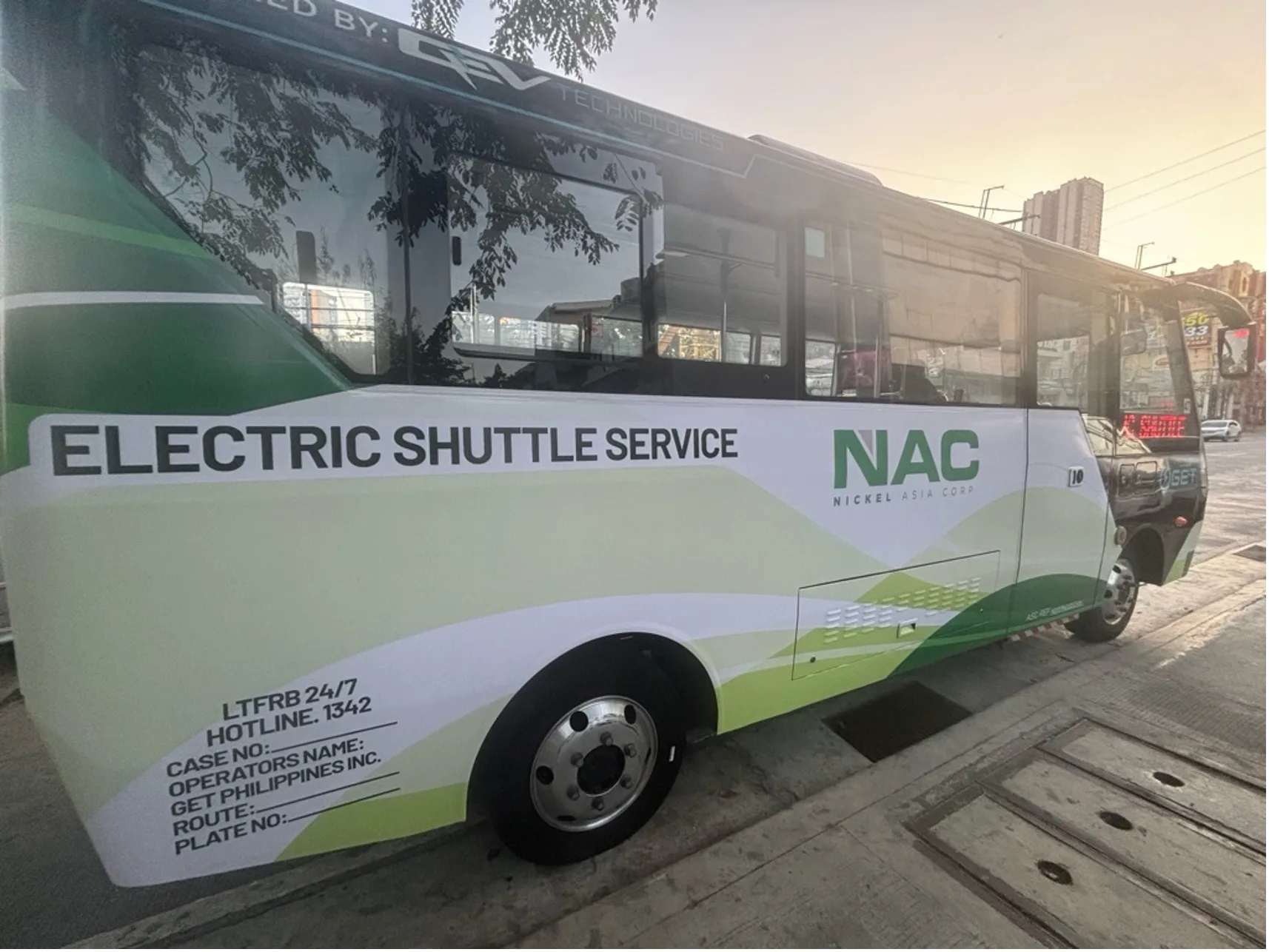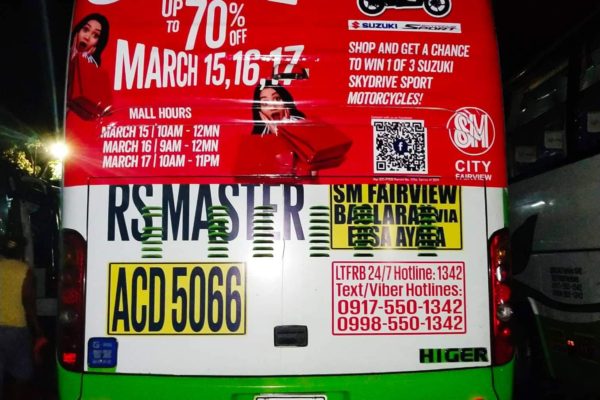Transit Advertising Philippines: An Innovative Method to Advertise
Just How Transit Advertising And Marketing Can Transform Public Transportation Spaces Into Dynamic Marketing Platforms
Transit marketing holds considerable capacity to redefine public transportation areas into lively marketing systems that involve and educate. As we check out the complex advantages and evolving strategies of transit advertising, it elevates the question of how this transformation could redefine our interactions with both brand names and the city setting.
Advantages of Transportation Advertising And Marketing

Additionally, transportation marketing is highly cost-efficient compared to traditional media. It enables advertisers to attain high impressions at reduced prices, optimizing return on financial investment. The captive target market of commuters supplies an opportunity for brand names to convey their messages to people that are usually receptive throughout their travel times.
Moreover, the dynamic nature of transit advertising and marketing allows projects to be upgraded often, ensuring that messaging continues to be prompt and pertinent. This versatility can be critical in replying to market patterns or promotional events, maintaining the brand name top-of-mind for consumers. Finally, the prevalent visibility of transit marketing contributes to brand recall; repeated exposure within acquainted traveling contexts reinforces brand understanding and cultivates customer loyalty, eventually driving sales and boosting brand name reputation.
Kinds Of Transit Marketing
Mass transit systems provide various styles for marketing, each satisfying various advertising approaches and audience engagement methods. One popular type is outside bus and train wraps, which cover the entire car and produce a mobile signboard effect, permitting high visibility in urban environments. These wraps can capture attention as they traverse busy roads, getting to a varied target market.
Another preferred layout is indoor marketing, which includes posters, electronic displays, and ads on transit seats. These placements involve travelers during their trip, enhancing brand messaging in a confined room. Digital shows, in specific, offer the benefit of dynamic web content, enabling marketers to upgrade messages in real-time.
Station advertising is additionally considerable, including posters, banners, and interactive booths within transit terminals. These ads utilize foot web traffic and can target specific demographics based upon location.
Last but not least, marketing partnerships with transportation authorities can result in one-of-a-kind campaigns, such as themed transportation experiences or events, boosting the overall involvement with commuters. Each kind of transit advertising and marketing uses distinctive benefits, permitting brands to customize their method to effectively reach their target market within the general public transportation ecological community.
Engaging Travelers Properly
Travelers are significantly inundated with marketing messages throughout their everyday trips, making it important for brand names to involve them in innovative means. To catch focus in this crowded area, marketers have to prioritize imagination and importance. Utilizing distinctive visuals and concise messaging can considerably boost the likelihood of interaction.
Interactive aspects, such as QR codes or increased fact features, can likewise transform fixed advertisements right into immersive experiences, fostering a much deeper connection with the audience. Brands must concentrate on addressing commuters' needs and rate of interests, customizing messages to reverberate with their lifestyle, whether via promotions for regional organizations or solutions made to enhance their commuting experience.
Moreover, timing plays an important function; purposefully see putting ads during optimal travelling hours can take full advantage of exposure and effect. Engaging commuters effectively also involves leveraging social media integration, allowing guests to share their experiences or promos straight from transit platforms, thereby intensifying brand name reach.
Essentially, effective engagement pivots on recognizing the traveler trip and producing compelling, interactive, and relevant marketing experiences that not only record focus however also drive activity and commitment. By doing so, brands can transform public transport into a dynamic advertising and marketing system that resonates with its audience.

Measuring Marketing Effect
How can brand names properly evaluate the effectiveness of their marketing campaigns en route atmospheres? Measuring the influence of transit advertising needs a multifaceted strategy that integrates qualitative and quantitative metrics. One widespread technique is tracking engagement with mobile analytics, where brands can examine foot traffic patterns and application interactions previously, during, and after campaigns.
Studies can offer valuable insights right into brand recall and customer sentiment, over at this website enabling brand names to evaluate just how well their messages resonate with commuters. In addition, keeping an eye on social networks interaction pertaining to particular projects can reveal shifts in public assumption and brand name discussion.

Additionally, teaming up with transportation agencies can enhance measurement precision, as they usually possess comprehensive market information on ridership fads. By integrating these approaches, brands can establish a detailed understanding of their advertising and marketing performance, ensuring that their campaigns not only reach but also impact their target market properly.
Future Fads in Transportation Advertising
A significant shift is anticipated en route advertising as technical innovations and transforming customer actions improve the landscape. Transit Advertising Philippines. The combination of interactive media and digital displays is expected to boost involvement, enabling brands to deliver vibrant web content that reverberates with diverse audiences. As mass transit systems welcome clever modern technology, marketers will leverage real-time information analytics to customize messages based on passenger demographics and actions
Additionally, enhanced reality (AR) is positioned to reinvent the method commuters communicate with advertisements. By providing immersive experiences, AR can change a mundane trip right into an engaging story that catches attention and cultivates brand loyalty. This technology will likely motivate marketers to develop even more experiential campaigns that drive customer communication.
Sustainability is another essential pattern influencing transportation advertising. As ecological consciousness expands, brands will significantly seek to line up with eco-friendly techniques, utilizing lasting materials and advertising green efforts within their projects.
Final Thought
In final thought, transit marketing uses substantial benefits by boosting brand visibility and engaging a captive audience. As trends evolve, the potential for innovative interactions between brands and commuters is poised to grow, guaranteeing that transit advertising remains an important component of modern marketing strategies.
Transit advertising and marketing holds substantial possibility to redefine public transport areas right into dynamic advertising systems that notify and engage. The pervasive visibility of transportation marketing contributes to brand name recall; duplicated exposure within familiar traveling contexts enhances brand recognition and cultivates consumer loyalty, inevitably driving sales and boosting brand reputation.
Just how can brand names accurately analyze the performance of their marketing campaigns in transportation environments?In conclusion, transportation marketing provides substantial advantages by enhancing brand name visibility and involving a captive target market. Transit Advertising Philippines. As patterns evolve, the capacity for innovative communications between commuters and brand names is poised to expand, look at here making sure that transit advertising and marketing remains an essential component of modern-day marketing approaches